The way Chelsea have been overpowering their opponents since Carlo Ancelotti took over is starting to show their title rivals just what they’re missing – muscle.
Right now, Chelsea are a frightening combination of athleticism, efficiency and skill; but in their last league game – the 2-0 win over Arsenal – it was their physical power that got them the result.
In players like Drogba, Michael Essien, John Terry, Branislav Ivanovic, John Obi Mikel and Frank Lampar, Chelsea have physical strength in abundance. Even Florent Malouda, one of their shortest players, is incredibly strong and almost impossible to knock off the ball.
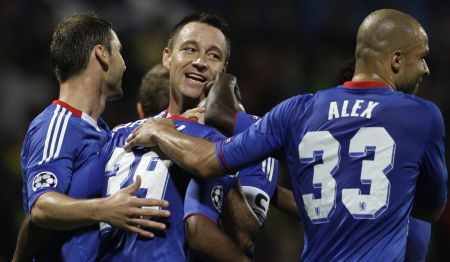
THE BIG GUYS: You can't turn the style on in every game, but Chelsea always have a plan B - get physical (not the John Terry kind of physical).
Even though they were dominated by Arsenal in terms of possession, they ground out a result when Didier Drogba barged in to flick home a cross for the opening goal, and Alex hammered a free-kick into the back of the net for the second goal – two moments of raw power that resulted in three points for the team.
On the same weekend, Chelsea’s other title rivals, Manchester United, were hassled and harried all over the pitch by an energetic Sunderland side, and were slightly fortunate to come away with a draw.
Ironically, both Arsenal and United dominated English football during periods when they were known for being able to play great football whilst retaining the physical wherewithal to, as they like to say in football, get “stuck in” when necessary.
Arsenal’s “Invincibles”, who went the entire 2003/04 season without losing a single game, was a team of incredible athletes. Kolo Toure, Sol Campbell, Ray Parlour, Martin Keown, Patrick Vieira, Thierry Henry and Robert Pires were all imposing figures over 6 ft tall, capable of forcing results by physically dominating opponents when all their fancy footballing wasn’t working.
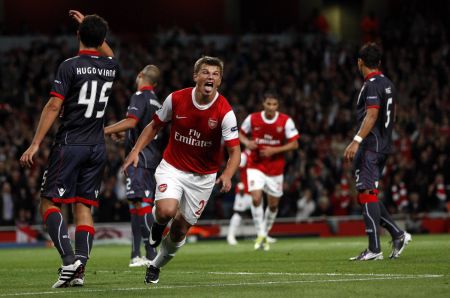
Of all the big-@$$ Russians Wenger could've bought, he got the 5ft 7in Andrei Arshavin, the latest in a line of relatively pint-sized Arsenal signings.
But Arsene Wenger seems to have adopted a different philosophy in recent years, opting to sign players like Theo Walcott, Eduardo, Aaron Ramsey, Andrei Arshavin and Cesc Fabregas, the tallest of whom stands at 5 ft 9 in.
There are a few who are slightly taller, like Tomas Rosicky, Samir Nasri and Bacary Sagna; but they’re all still under 5 ft 10 in.
Over the last three seasons, Wenger has sold two of his most physical players, Emmanuel Adebayor and Toure; and brought in Marouane Chamakh, who at 6 ft 2 in is hardly a big guy in English Premier League terms.
And when he signed Thomas Vermaelen to fill the void left by Toure, much was made about his 6 ft frame, which is rather short for a central defender.
Though Vermaelen has, for the most part, proven that he can compensate with that incredible leap of his, Wenger’s latest defensive recruits Laurent Koscielny and Sebastien Squillaci are just an inch taller than Vermaelen, and they don’t look half as tough as Vermaelen.
But I think it was all part of a bold move by Wenger to make sure his team stays ahead. When he first arrived in England, Wenger made Arsenal successful by revolutionising football with his fitness regime – which was basically stopping the British players from stuffing themselves with pies, chips and beer. Needless to say, it put his team ahead of the curve.
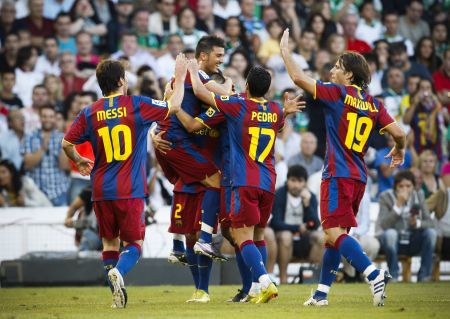
Barcelona also play with a lot of short players, but then again, they're Barcelona. And they have Lionel Messi.
Now, he’s trying to do the same by catching on to a new revolution – short, skillful players with a low centre of gravity. The “Barcelona system”, if you will.
The logic is simple: Most teams will be looking to sign professional athletes who are tall, powerful men. But Arsenal would be a team of nippy, elusive and tricky attackers who could run rings around their big, lumbering opponents.
Wenger has invested in the idea over the last few years, unfortunately without quite the same success as Barcelona.
Alex Ferguson, too, seemed to be heading in a similar direction a few seasons ago, bringing in players such as Wayne Rooney, Carlos Tevez, Nani, Anderson, Park Ji-Sung and Owen Hargreaves.
United also seem to have opted for grace over power in their style of play. They no longer play with a specialist defensive midfielder or “hatchet man”, as Nigel de Jong has helped to rechristen the position.
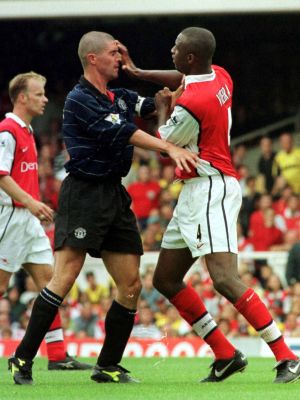
What happened to United and Arsenal's hard men? A bit of fight and bite in midfield can do a lot to the opposition.
Where there was once Roy Keane and Paul Ince, there is now Darren Fletcher and an ageing Paul Scholes both roaming freely in a flat midfield.
The two form a classy, crafty partnership and make for a more fluid system. However, up against the athleticism of teams such as Everton, Bolton and Sunderland, Fletcher and Scholes have been over-run at times.
They’re no shrinking violets, but they can’t bring the same steel to midfield that top defensive midfielders like Michael Essien, John Obi Mikel, de Jong or Yaya Toure would.
This is something that United have been missing this season. A decade ago, Roy Keane would have thrown in a tackle or two against teams like Sunderland just to let them know he was around; while players like Gary Neville, Scholes, Nicky Butt and David Beckham were always up for a good scrap and would give as good as they got. Having trained in England, they knew how to place themselves and deal with the physical aspects of the game.
But foreign imports such as Nani, Dimitar Berbatov and Antonio Valencia don’t seem to stand up to the physical battles in the Premier League quite the same way, and even some of Ferguson’s recent English signings like Michael Carrick and Rio Ferdinand have turned out to be more cultured than courageous.
On the other hand, teams like Chelsea and Manchester City have been giving a lot of physical presence and playing a system with two powerful, athletic defensive midfielders to dominate the middle of the park; and maybe that’s why they’re sitting in first and second place at the moment.


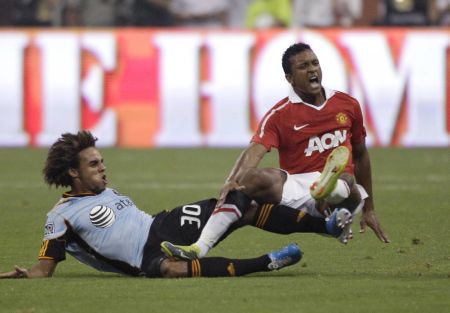
Tell us what you think!